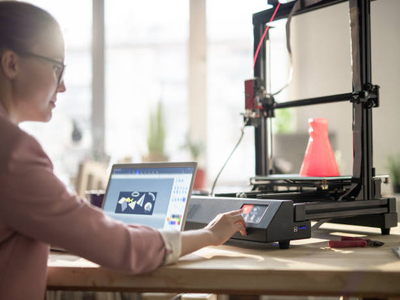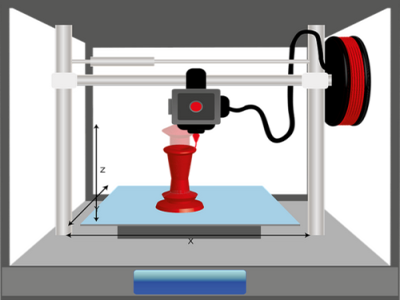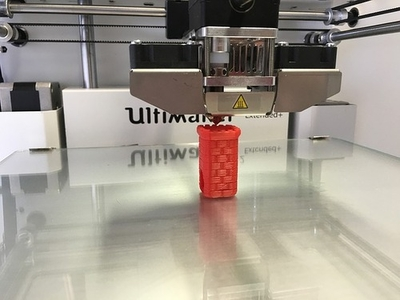What causes layer shift In 3D printing? There are a few things that can cause layer shifts in 3D printing.
In this blog post, we’ll discuss what those things are and how to prevent them from happening.
By understanding what causes layer shift, you can take steps to ensure that your prints come out correctly every time!
What Causes Layer Shift In 3D Printing?

A 3D printer is a specialized piece of machinery that’s used to create complex three-dimensional objects from digital designs.
One of the unique features of 3D printing is layer shifting, which allows the printer to seamlessly blend different layers of material together in order to produce an object with smooth and seamless surfaces.
This process can be controlled using a series of precise settings and controls.
These settings and controls allow for very fine adjustments and precise control over the final shape and design of an object.
While layer shifting may seem like a simple concept, it’s actually one of the most powerful aspects of 3D printing technology.
Thanks to this feature, users can easily create complex structures that would be impossible to achieve with other manufacturing tools or processes.
In addition, with advances in science, we’re now able to produce objects made from a wide range of new materials such as plastics, metals, resins, foams, and many others.
Overall, layer shifting makes 3D printing a highly versatile tool that has numerous applications across a variety of industries and disciplines.
Read our related article, What is the Best Layer Height in 3D Printing? Which layer height is the strongest and best for your project? Here’s what to know!
How To Prevent Layer Shift In 3d Printing
Accurate Printer Calibration
To ensure the best results when printing in 3D, it’s essential to calibrate your printer properly.
Layer shift is a condition where one layer of the print isn’t positioned properly on top of the previous layer.
If one layer isn’t positioned properly, it can cause problems ranging from distorted and uneven features to complete print failures.
Luckily, detecting and correcting layer shift is relatively simple.
By adjusting settings on your printer or using third-party software to fine-tune the bed height and print speed, layer shifting can be alleviated.
Once your printer is calibrated properly, you can rest assured that your print will come out clean and smooth every time.
If you’re looking to get started with 3D printing, make sure to take the time to calibrate your printer so that you can enjoy great results every time!
Minimizing Lumps & Vibrations

One of the biggest challenges faced when printing 3D objects is preventing undesired layer shifts during the printing process.
These layer shifts can happen for a number of different reasons, including bumps and vibration in the print bed or in the actual extruder head.
To minimize these shifts and ensure smooth, high-quality prints, it’s important to address these potential sources of unwanted movement and instability.
On the print bed level, one key strategy for preventing bumps and vibrations is to optimize the surface so that it provides a consistent, even foundation for your print.
This can be achieved by using leveling screws to adjust the height and position of each corner individually until they’re all level with each other.
Additionally, it might also be helpful to use a material like blue tack or painter’s tape to further stabilize the print feel from below.
This will ensure that small motions from bumps are minimized or absorbed by the additional layer on top.
Read More: What is the Thinnest a 3D Printer Can Print? Discover the limits of your 3D printer in this guide covering layer thickness!
Compress the Belts & Pulleys
3D printers work by depositing thin layers of material on top of each other to build up an object.
But sometimes, those layers can shift slightly during the printing process, causing inconsistencies in the finished product.
There are a few ways to prevent this from happening.
- One is to make sure that the belts and pulleys that drive the printer’s axes are properly tensioned. Loose belts can cause the axes to slip, resulting in layer shift.
- Another way to prevent layer shift is to use a heated build platform. This helps to keep the bottom layer of the object molten, which prevents it from warping as successive layers are built on top.
- Finally, use support structures when printing complex objects. These provide a scaffold for the object as it’s being built, and can help to prevent distortions caused by layer shift.
By following these simple tips, you can ensure that your 3D prints come out looking their best.
Decrease the Print Speed

It may be tempting to print 3D prints as fast as possible, however, this may have an impact on how the final product comes out.
Fortunately, this issue can be prevented by reducing the print speed.
Slower printer speeds allow each layer to settle into place before another layer is added on top, preventing thin layers of plastic from shifting out of alignment during the printing process.
By taking this extra step, makers can ensure that their prints are not marred by layer shifts and enjoy better results every time.
Reserve the Printing Surface
In the world of 3D printing, it’s crucial to maintain a smooth and even printer surface at all times.
This helps to prevent any layer shift, which can cause unwanted distortion or defects in the final print.
The best way to secure the printing surface is by using an adhesive material such as hairspray or car wax.
By coating the printing platform with an adhesive material, you can help anchor your model down and prevent it from shifting during the printing process.
Furthermore, this method also provides an extra layer of protection for your printer bed, preventing accidental damage from happening.
If you’re looking for a simple and effective way to prevent layer shifts in 3D printing, securing your printing surface with adhesive material is the solution!
Cooling Your Electronics
To prevent layer shift, it’s important to control temperatures at all stages of the printing process.
One effective method is to cool down the electronics that control the print head and temperature settings.
By keeping these components cool, they will be less likely to overheat and cause a shift in the layered print heads.
Additionally, using fans or other methods to circulate air around the printer can also help prevent layer shifts by reducing heat throughout the build platform.
Through proper cooling techniques, 3D printing can produce accurate, high-quality products with optimal efficiency.
The Bottom Line

Layer shift is a common problem in 3D printing, but it can be prevented with the right precautions.
By properly tensioning belts and pulleys, using a heated build platform, or reserving the printing surface by using an adhesive material, you can ensure that your prints come out looking their best.
Most importantly, keeping your electronics cool will help reduce layer shifts and produce accurate, high-quality prints.
Read More